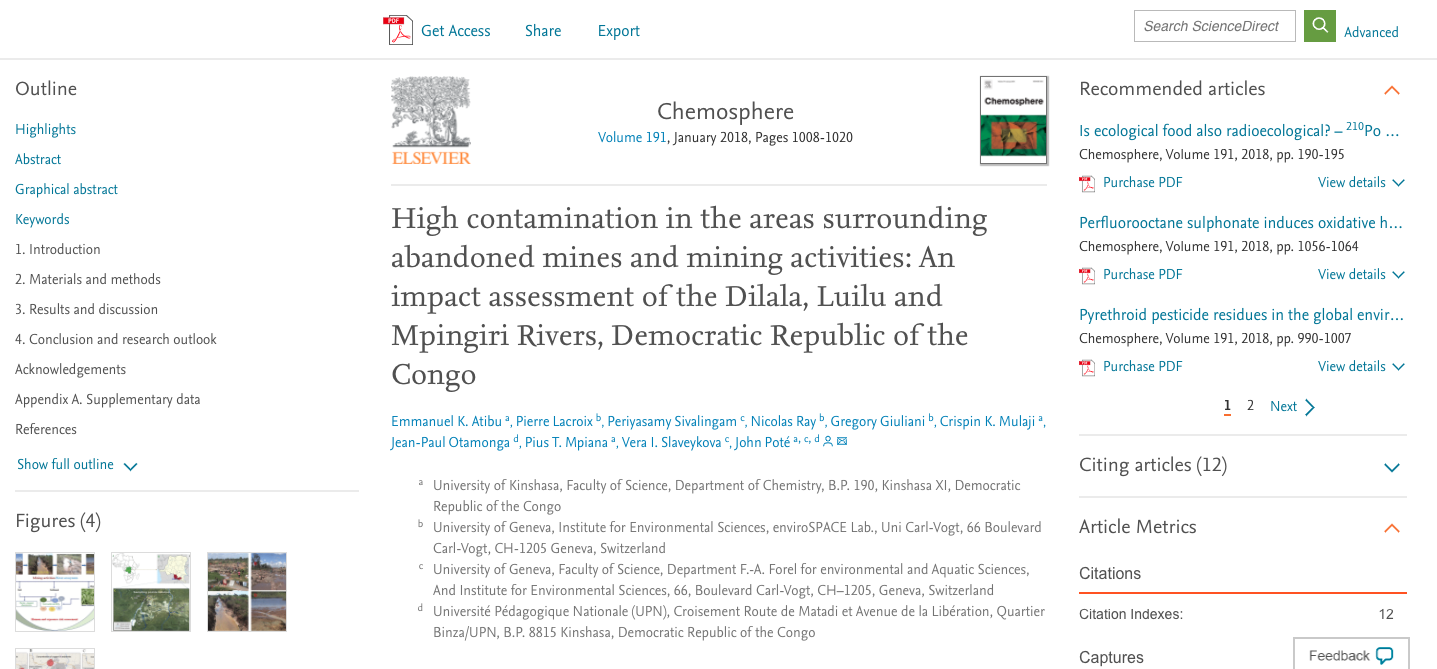High contamination in the areas surrounding abandoned mines
Description
Abandoned mines and mining activities constitute important sources of toxic metals and Rare Earth Elements (REEs) affecting surrounding environmental compartments and biota. This study investigates the contamination degree and distribution of toxic metals and REEs in contrasting sediment, soil and plant samples surrounding rivers in the African copperbelt area characterized by the presence of numerous abandoned mines, artisanal and industrial mining activities. ICP-MS results highlighted the highest concentration of Cu, Co and Pb in sediments reaching values of 146,801, 18,434 and 899 mg kg?1, respectively. In soil, the values of 175,859, 21,134 and 1164 mg kg?1 were found for Cu, Co and Pb, respectively. These values are much higher than the sediment guidelines for the protection of aquatic life and international soil clean-up standards. Enrichment factor and geoaccumulation index results indicated important contribution of mining activities to the study sites pollution in addition to natural background. Highest metal accumulation in leaves of Phalaris arundinacea L., was observed, reaching values of 34,061, 5050 and 230 mg kg?1 for Cu, Co, and Pb, respectively. The ?REE concentration reached values of 2306, 733, 2796 mg kg?1 in sediment, soil and plant samples, respectively. The above results were combined with geographical information including satellite imagery, hydrography and mining concessions. Maps were produced to present the results in a comprehensive and compelling visual format. The results will be disseminated through an innovative mapping online platform to simplify access to data and to facilitate dialogue between stakeholders.
